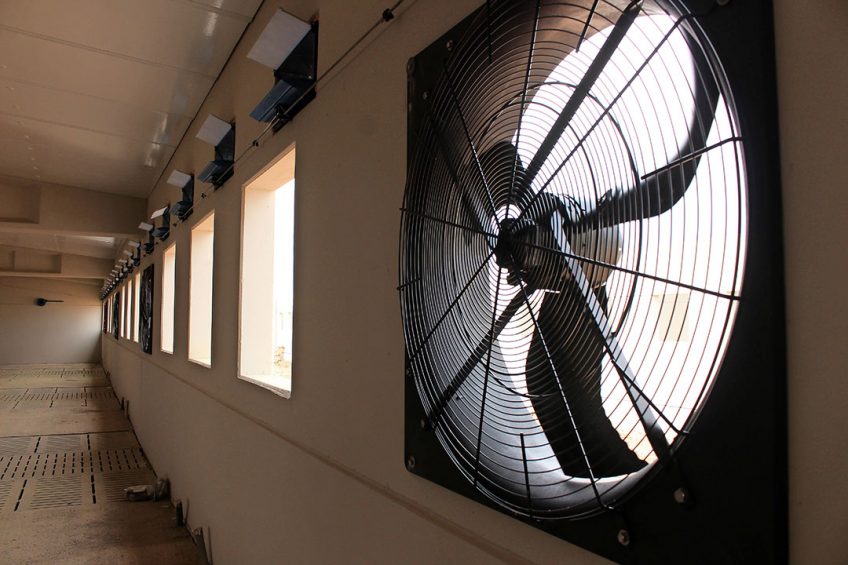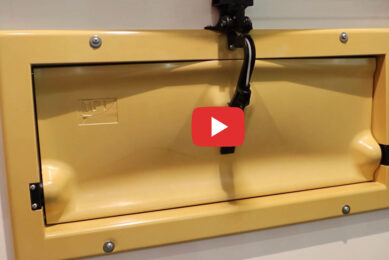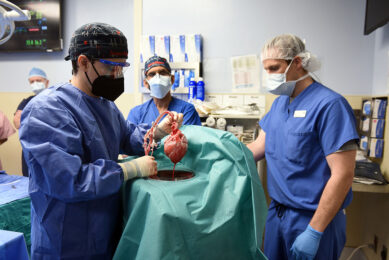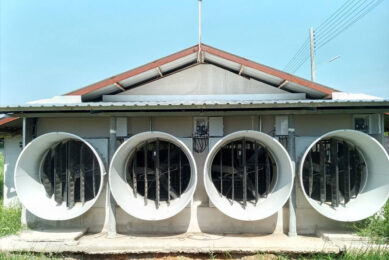7 pig house ventilation rules and why they matter

It pays to understand the air flow inside pig houses. Knowing how air behaves inside buildings helps to be better able to apply a correct ventilation policy inside the pig houses. Pig management expert John Gadd explains more and introduces 7 ventilation rules.
Some time ago, I wrote about better insulation of pig houses. Following up on that topic, I continue with this mini-series on key and basic profit-dependent areas of pig production – with more to follow in upcoming columns.
“Why go back to basics like this,” you ask. “Surely we know it all?” Yes, many of you do, but in my experience of problem solving on pig units – even today many don’t, so a series of refresher courses on them could be called for.
Refreshing the basics of ventilation
In my farm visits, many of the causes and solutions involve ventilation. And a discussion on basics back in the farm kitchen can open eyes, and with better understanding, the remedies seem much more feasible; the response being… “I never realised the cause was due to that.”
So… why do we ventilate?
- To provide oxygen;
- To control temperature;
- To remove moisture, excess heat, gases, dust, bacteria, viruses, fungal spores and chemicals.
- Keep pigs and stockpersons healthier and happier.
- To extend building life.
Even so – too simplistic
So for economic reasons we need to keep the pigs in their environmentally-influenced comfort zone. The primary objectives to achieve this are:
- In normal temperate conditions, to provide varying air supply so we can achieve a correct house temperature to maximise performance;
- In temperate summers, to keep the temperature around the pigs within 3 to 4ºC of the outside conditions;
- In very hot conditions, have the capability to provide high air speeds over the pigs to increase their upper temperature tolerance level, often using wetting to assist evaporative cooling;
- In cold to very cold conditions, to provide a controllable minimum level of ventilation, but at the same time directing the air adequately over the pigs with good air mixing so as to avoid draughts from cold incoming air. Supplementary heating may be called in to assist this process.
A truism. And generally poorly appreciated.

Recently, in an interesting contribution to our Heat Stress special edition, Prof Bruno Silva explained about pig cooling techniques
It is easier to keep pigs warmer in cold weather than sufficiently cool in hot weather. With global warming meaning (much) hotter summers, the effect of exceeding the animal’s Upper Critical Temperature by lowered performance is:
(a) underrated and
(b) getting worse.
From years of hard-earned experience I find clients much better at keeping pigs warm than keeping them cool enough. In the former they are alert to huddling, shivering, compensatory over-eating, but are less aware of hot weather signs of wrong-mucking especially when it occurs in central pens rather than in pens at either end of the building.
Greater incidence of tail biting and other ‘disturbance vices’ as well of a fall-off in appetite – not always noticed as even if slight it, can still acutely influence performance – sow performance especially with their several months of backlog. Clients are surprised when told that incorrect ventilation is the most likely cause of their worries.
‘Controlled’ versus ‘natural’ ventilation
Ventilation works when the rules are followed, choice being dependent on cost, payback and suitability for the circumstances. Those without such modern systems which do it for you must be aware of the rules.

Read more expert opinions in our special section
What are the ventilation ‘rules’?
- Understanding how air moves. Not in straight lines – unless under high pressure, but in ‘bubbles’ which swirl mainly up and down (warm air rises) becoming less as distance dictates. The skill here is to manipulate the air flow so that it crosses the pigs back (in normal temperatures at about 0.2 m/s);
- Following on from the 1st rule: you need a smoke generator to judge this air flow, a beekeeper’s smoker will do.
- Normally ventilate the dunging area first, the pigs last. In hot conditions the reverse.
- Similarly and normally, have a long air travel. This ensures good air mixing and the pigs are never in a cold air current or a draught. Again in hot weather reverse the process.
- Fans do not direct the air, controllable inlets do this. So inlet closure and fan speed must be interlinked by a controller.
- Preferably exhaust the air, not pressurise, as a fan exhausting the air in a properly sealed building has to draw in air from the inlets which can be controlled.
- According to the number and the weight of the pigs, determine their maximum and minimum air requirement.











